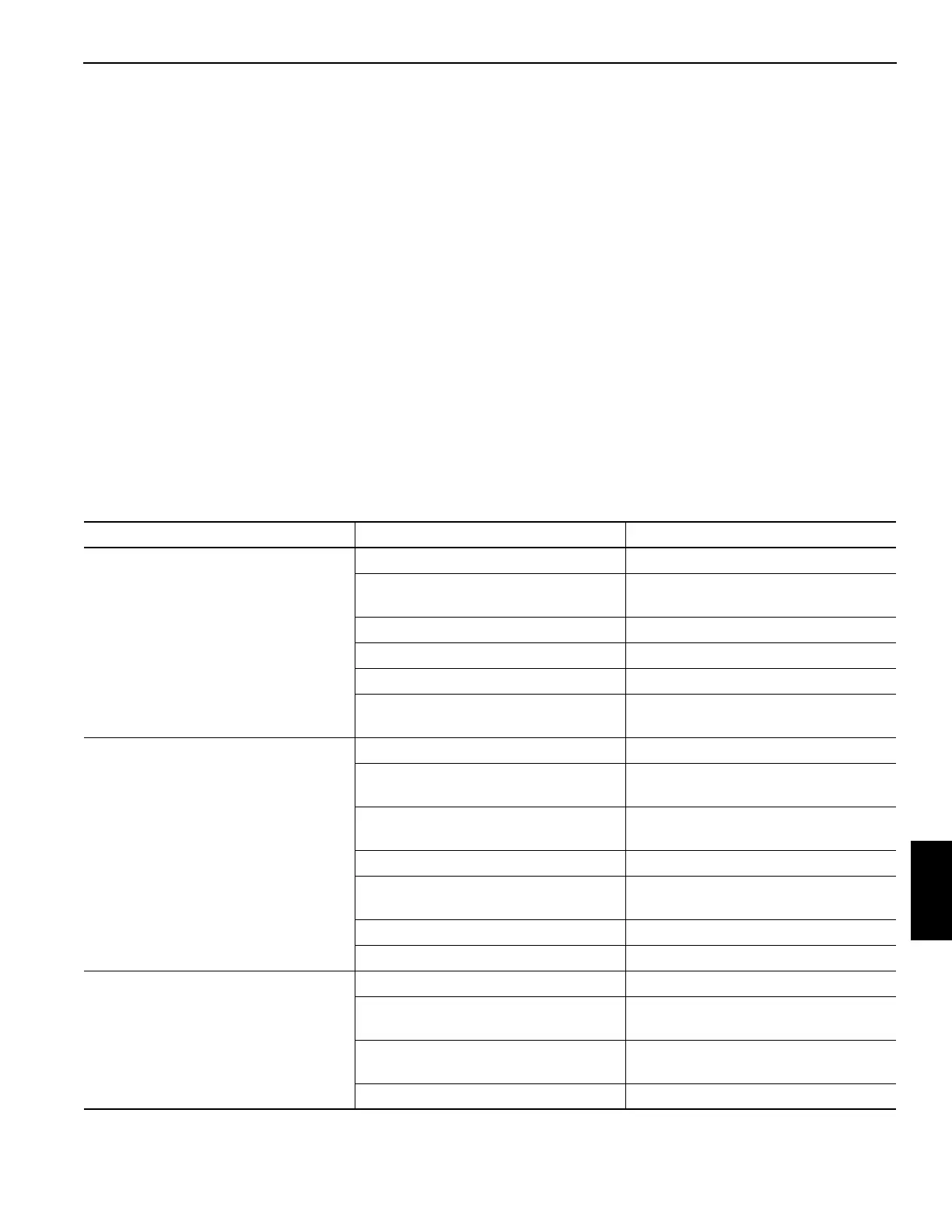Grove Published 11-10-2014, Control # 524-00 8-9
RT880E SERVICE MANUAL UNDERCARRIAGE
Functional Check
A normal periodic functional check of the entire steering
system will generally be adequate to ensure satisfactory
service.
1. Check all fittings for leakage. An accumulation of moist,
black dirt is a good indication of leakage.
2. With the engine running at idle and at full throttle, and
with the machine standing still and moving, turn the
steering wheel through the full range of travel. Note any
speed irregularities and sticky sensation. This may indi-
cate dirt in the fluid. If the steering wheel continues to
rotate when started and released, a condition known as
Motoring exists. This may also indicate dirty fluid in the
system.
3. Ensure the system has adequate power. If there is an
indication of hard steering, this can be caused by either
a reduced oil flow to the control valve or a reduced sys-
tem relief pressure. Adequate oil flow under all condi-
tions can best be checked by timing the full travel of the
cylinder with the steered axle unloaded and loaded. If
there is a great difference at low engine speed and slight
difference at high engine speeds this may indicate a
defective pump. Adequate oil pressure can only be
determined by connecting a pressure gauge [3500 psi
(24 MPa) full scale recommended] at the swing/steer/
pressure gauge test port (GP2). With the engine running
at a medium speed, turn the steering wheel to one end
of the travel and hold the cylinders at the travel limit
briefly, just long enough to read the pressure gauge.
Never hold the system at relief pressure for more than a
few seconds at a time. The pressure gauge should indi-
cate 2600 psi (17.9 MPa).
REAR STEERING SYSTEM
Troubleshooting
Symptom Probable Cause Solution
1. Rear steering inoperative. a. Hydraulic oil low. a. Refill hydraulic reservoir.
b. Clogged, broken, or loose
hydraulic lines or fittings.
b. Clean, tighten, or replace
lines or fittings.
c. Steer cylinder locked. c. Repair or replace cylinders.
d. Defective control valve. d. Repair or replace valve.
e. Defective steer cylinder(s). e. Repair or replace cylinder(s).
f. Lack of electrical signal f. Check electrical connections/
wiring
2. Hard to steer left and right. a. Hydraulic oil low. a. Refill hydraulic reservoir.
b. Clogged or loose hydraulic
lines or fittings.
b. Clean or tighten lines or
fittings.
c. Defective steering control
valve.
c. Repair or replace valve.
d. Defective hydraulic pump. d. Repair or replace pump.
e. Clogged or loose hydraulic
lines or fittings.
e. Clean or tighten lines or
fittings.
f. Defective steer cylinder. f. Repair or replace cylinder.
g. Damaged relief. g. Replace relief valve.
3. Steering is erratic left and right. a. Hydraulic oil low. a. Refill hydraulic reservoir.
b. Clogged or loose hydraulic
lines or fittings.
b. Clean or tighten lines or
fittings.
c. Defective steering control
valve.
c. Repair or replace valve.
d. Defective hydraulic pump. d. Repair or replace pump.

